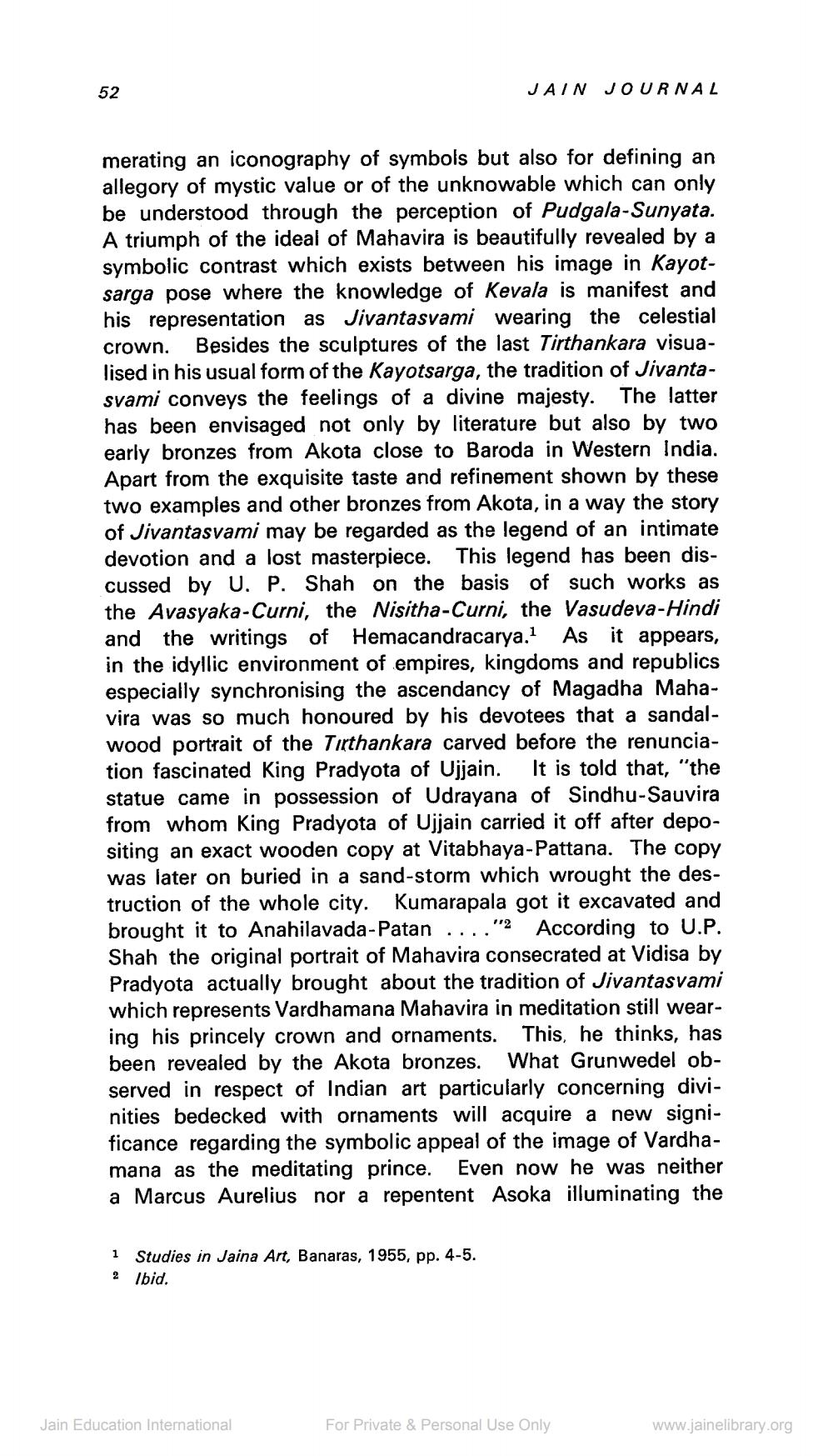Book Title: Jain Journal 1974 10 Author(s): Jain Bhawan Publication Publisher: Jain Bhawan Publication View full book textPage 4
________________ 52 merating an iconography of symbols but also for defining an allegory of mystic value or of the unknowable which can only be understood through the perception of Pudgala-Sunyata. A triumph of the ideal of Mahavira is beautifully revealed by a symbolic contrast which exists between his image in Kayotsarga pose where the knowledge of Kevala is manifest and his representation as Jivantasvami wearing the celestial crown. Besides the sculptures of the last Tirthankara visualised in his usual form of the Kayotsarga, the tradition of Jivantasvami conveys the feelings of a divine majesty. The latter has been envisaged not only by literature but also by two early bronzes from Akota close to Baroda in Western India. Apart from the exquisite taste and refinement shown by these two examples and other bronzes from Akota, in a way the story of Jivantasvami may be regarded as the legend of an intimate devotion and a lost masterpiece. This legend has been discussed by U. P. Shah on the basis of such works as the Avasyaka-Curni, the Nisitha-Curni, the Vasudeva-Hindi and the writings of Hemacandracarya.1 As it appears, in the idyllic environment of empires, kingdoms and republics especially synchronising the ascendancy of Magadha Mahavira was so much honoured by his devotees that a sandalwood portrait of the Tirthankara carved before the renunciation fascinated King Pradyota of Ujjain. It is told that, "the statue came in possession of Udrayana of Sindhu-Sauvira from whom King Pradyota of Ujjain carried it off after depositing an exact wooden copy at Vitabhaya-Pattana. The copy was later on buried in a sand-storm which wrought the destruction of the whole city. Kumarapala got it excavated and brought it to Anahilavada-Patan According to U.P. Shah the original portrait of Mahavira consecrated at Vidisa by Pradyota actually brought about the tradition of Jivantasvami which represents Vardhamana Mahavira in meditation still wearing his princely crown and ornaments. This, he thinks, has been revealed by the Akota bronzes. What Grunwedel observed in respect of Indian art particularly concerning divinities bedecked with ornaments will acquire a new significance regarding the symbolic appeal of the image of Vardhamana as the meditating prince. Even now he was neither a Marcus Aurelius nor a repentent Asoka illuminating the 1 Studies in Jaina Art, Banaras, 1955, pp. 4-5. 2 lbid. Jain Education International JAIN JOURNAL 112 For Private & Personal Use Only www.jainelibrary.orgPage Navigation
1 2 3 4 5 6 7 8 9 10 11 12 13 14 15 16 17 18 19 20 21 22 23 24 25 26 27 28 29 30 31 32 33 34 35 36 37 38 39 40 41 42 ... 54
